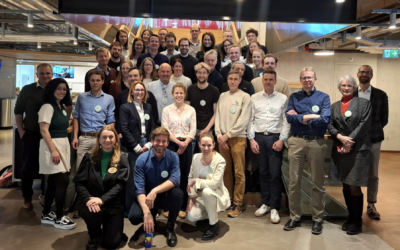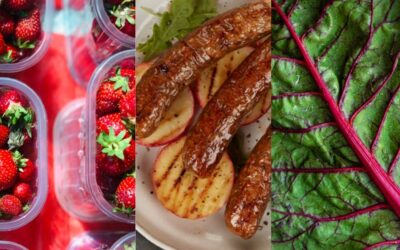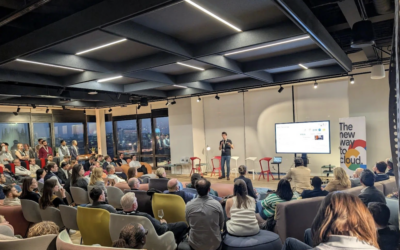The Valley’s State of Play event on...
The Cultured Hub opens its state-of-the-art biotech facility in Switzerland
The Cultured Hub opens its state-of-the-art biotech facility in Switzerland

Kemptthal (Switzerland), December 3, 2024 –The Cultured Hub officially opens its doors today, marking a milestone for the global cellular agriculture and food industry communities. The pioneering scale-up and growth service aims to revolutionize the cultivated food and beverage sector by accelerating the development and market penetration of cellular agriculture products. These innovations can address increasingly complex food system challenges, reducing environmental impact and improving food security.
Equipped with advanced product development labs, cell culture, and fermentation capabilities and equipment, and with its ecosystem of partners, the Hub is designed to empower start-ups and organizations to scale up and accelerate the development of market-ready, sustainable, healthy, and affordable products. The Hub offers a technology platform that extends beyond food and can support the development of diverse products, such as meat, fish, dairy, pet food, and plant-based cells like cocoa – as well as materials like cosmetics and selective pharma applications.
“The launch of The Cultured Hub is a pivotal moment in the global push for sustainable food production,” said Yannick Gaechter, CEO of The Cultured Hub. “The opening of this facility is not just an achievement for our team, but a landmark moment for the industry. We are excited to open a facility that will enable start-ups to scale up without heavy capital investment and contribute to global food system improvements.”
Unique scale-up capabilities
At the Hub, companies can now scale up their processes from small-scale laboratory experiments (e.g., shake flasks) to 1,000-liter pilot operations without investing in expensive assets or diluting equity. This unique capability bridges the gap between research and commercial production, enabling companies to demonstrate and refine their processes efficiently. The Hub can host three companies working simultaneously, each in fully separated suites, fostering an environment of collaboration and innovation. This organization accelerates market entry by saving time and resources, allowing actors to focus on creating great-tasting food products at a competitive cost.
Industry expertise and collaboration
A joint venture between Migros, Givaudan, and Bühler Group, The Cultured Hub leverages centuries of collective experience in food processing, product development, production, marketing, and market launches. All three companies have shown a strong commitment to sustainability. This combination makes the Hub a unique access point for knowledge, skills, technology, and retail and consumer understanding.
“The Cultured Hub is designed to bridge the scale-up gap for companies, enabling them to retain equity, protect intellectual property, and fast-track their journey to market without high capital investment,” said Ian Roberts, Chief Technology Officer of Bühler Group. “We are thrilled to bring together industry players and create a collaborative environment that will drive significant advancements in the industry.”
“As a global leader in flavours, taste, functional and nutritional solutions, with deep expertise in biotech, Givaudan is committed to unlocking new opportunities in the cellular agriculture space and contributing to the transformation of the global food system,” said Fabio Campanile, Global Head of Science & Technology Taste & Wellbeing at Givaudan. “Through the Cultured Hub, and the ecosystem we are building with start-ups, partners and customers, we look forward to co-creating new, game-changing solutions that meet consumer demand for healthier, more planet-friendly products.”
“The Cultured Hub represents a paradigm shift in how we approach food production,” said Matthew Robin, CEO, Elsa Group at Migros Industries. “As Switzerland’s largest retailer, Migros is dedicated to offering choice to consumers, including innovative, sustainable food solutions.”
Strategically located in Kemptthal, Switzerland – a burgeoning hub of innovation in Europe, the Hub provides a vibrant working environment where start-ups and established companies can spearhead breakthroughs.
About The Cultured Hub
The Cultured Hub collaborates with a global network of start-ups to find answers to the food industry’s most pressing questions and develop foods of the future. The Cultured Hub enables start-ups in the cultivated foods sector to reach industrial manufacturing more quickly and cost-effectively. The organization’s aim is to accelerate the development of sustainable proteins – specifically cultivated meat, fish, seafood, and precision fermentation products – by providing state-of-the-art scale-up facilities, cutting-edge technologies, expert guidance, and an extensive network.
Never miss a Swiss food innovation morsel.
Latest News
Seven things we learnt at our State of Play event on side stream valorisation
Christina Senn-Jakobsen: Taking a bite out of food system myths
Taking a bite out of food system...
EPFL President and new SFNV Steering Committee member Anna Fontcuberta on shaping the future of food
Switzerland is home to some of the...
Forward Fooding unveils 2024 FoodTech 500, celebrating the top global AgriFoodTech companies
Forward Fooding has released the...










